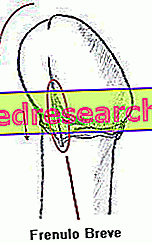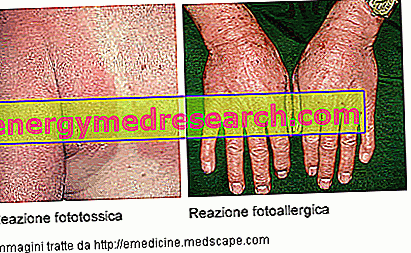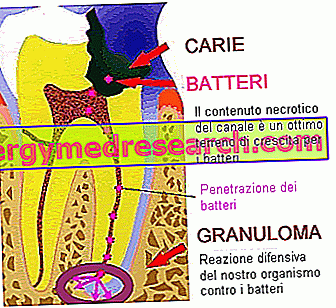By Dr. Gianluca Rizzo
Food sources of PUFA
As mentioned, all dried fruit contains a good concentration of both precursors of the ω3 and ω6 series. The richest sources of mature molecules are given by animal foods.

Biotechnology has made it possible to identify these strains to use them as a source of acceptable ω3 for a vegetarian or vegan style (cod liver oil supplements would be a contradiction for those who have decided to make an ethical choice).
Integration could be very important in the age groups at risk, without however forgetting that even the precursors have a great metabolic relevance. Although our enzymes can be considered inefficient, they still play an important role in maintaining the balance between the various intermediate compounds. If we ingest only precursors, our enzymes may fail in all conditions to produce the physiological proportion of LC-PUFA, while if we ingest only preformed molecules, the metabolic reactions would work backwards and reach a balance with the retro conversion into precursors and with the lowering of the concentration of mature molecules. On a theoretical level, only a diet that includes a share of precursors and long chain fatty acids can maintain a physiological state of all the necessary components.
Polyunsaturated Fatty Acids and Vegetarian Diet
While omnivores with a balanced diet may not need integration outside of sensitive ages, vegan ovo-latto should monitor LC-PUFA levels, as cow's milk is not a good source of polyunsaturated fats, while eggs can compensate for deficiencies only partially. Vegans, on the other hand, could benefit from integration or fortification with EPA and DHA (from microalgae; any other vegetable source such as spirulina will be too poor in total polyunsaturates to represent a food source), especially in the more delicate phases, without underestimating the contribution of the precursors through the consumption of nuts and seeds (fundamental also for the protein balance). Desaturase and elongase enzymes have been shown to be stimulated with a poor LC-PUFA diet, so in adulthood integration may not be necessary in vegans, provided a consistent monitoring program is in place. Numerous studies have shown that in vegans EPA and DHA levels were 12-37% and 32-52% respectively compared to the values found in omnivores, while AA levels were unchanged and DPA levels lowered, but without significance statistics. In adolescence and in third age the integration could be essential, while the correct intake of LC-PUFA in the pregnant woman and in the nurse can be effective for the fetus or the suckling without further precautions. The most used method to date for the detection of the relative levels of PUFA is the analysis of lipids of erythrocyte, platelet and plasma lipid membranes, thanks to their relatively rapid turnover.
The choice of foods rich in PUFA by vegetarians must take into consideration another important aspect: the enzymes of the relevant biosynthetic pathways are common for both ω3 and ω6. Thanks to food chemistry, we know very well that omega 6 is widely distributed in plant foods, while omega 3 is more difficult to find at satisfactory concentrations. The result of this distribution implies that the lack of ω3 in the modern western diet engages the elongase and desaturase enzymes that are exploited in the maturation of ω6 (which sequester the active sites thanks to the advantage of concentration), to the detriment of the maturation of the ω3 that will remain in the form of precursors and will follow in part the catabolic pathway of beta oxidation of fatty acids (which already in normal conditions can represent up to 33% and 22% respectively in men and women). The inhibition mechanism of LC-PUFA synthesis ω3, due to high levels of linoleic acid, can affect up to 40% reduction and it seems that the substrate regulation mechanism is predominant compared to the regulation of gene expression. In particular, the last elongation reaction that leads to the formation of DHA from DPA appears to be limited and metabolically regulated, and involves the translocation of the intermediates within the peroxisome (especially at the hepatic level, while the synthesis up to DPA appears to occur already in the endoplasmic reticulum of the enterocyte), as shown by studies with ALA marked by stable isotopes of carbon 13 and followed by chylomicrons until the expulsion of 13CO2 with the breath. To cope with this situation it may be sufficient to properly evaluate food sources to select those with a more advantageous ω6 / ω3 ratio, such as flaxseed (1: 4), canola oil (2: 1), hemp oil ( 3: 1), compared to sunflower oil (62: 1). The ideal ω6 / ω3 ratio, according to the LARN, should be 4: 1 without exceeding 10: 1. Furthermore, the two classes of essential fatty acids give rise to types of ecosanoids with opposite action (proinflammatory, prothrombotic and aggregating, cytoproliferative), and only a balance of the two types can lead to a well-modulated response.
Benefits of integration and use
Let us not forget that a correct intake of polyunsaturates is linked to a better lipid balance and cholesterol, immunomodulation, an effective pathway of cellular signal transduction, greater cardiovascular health and osteo-articular metabolism (the latter not yet demonstrated) but also for the visual process at the level of the retina. In preliminary studies the LC-PUFAs have been successfully used in the treatment of children with short-term problems, sleep disorders, attention, learning and dyslexia disorders. Polyunsaturated fatty acids can be a good response to problems of lymphatic circulation, microcirculation, insulin modulation in type II diabetics and for disorders associated with inflammatory diseases (Crohns, psoriasis, rheumatoid arthritis, atopic dermatitis), and to mild edema conditions . A good supply of PUFA is positively linked to the prevention of cognitive disorders and diseases in old age, such as Alzheimer's. Of particular interest is the function of stimulation of homocysteine metabolism by ω3, recorded in some intervention studies, a function that could be very important for individuals at risk such as smokers, obese, elderly and vegans (see cobalamin). We remember that the greater the unsaturations and the greater the reactivity of the compounds, therefore we always pay attention not to frustrate the use of sources of PUFA underestimating the photo and thermolability of these compounds (the oils must always be lined or put in opaque containers and preserved for a limited time and all foods rich in PUFA must be cooked to the minimum necessary). LARNs recommend taking at least 2% PUFA with respect to total calories with a ratio of ω6 / ω3 averaging 4: 1 (respectively around 1-2% and 0.2-0.5% of total calories). In the quota of ω3 there should be 2g of ALA and 0.5-1g of EPA + DHA. Different doses can be recommended in cases of pathology or in sensitive age phases, even reaching 4-5% of PUFA, paying attention to the relative toxicity and therefore never going beyond 15% of the total calories of the diet (which is very difficult in the absence of supplements). In the absence of regular integration or fortification, in vegans it has been proposed to facilitate the synthesis of EPA and DHA through a ω6 / ω3 ratio up to 2: 1. It is also important to reach the caloric and protein quota for individual needs to prevent the ALA from being diverted to catabolic reactions. The contribution of pyridoxine, biotin, zinc, calcium, copper and magnesium also seems to be important for a correct maturation of PUFA. The industrial hydrogenation processes that are applied in order to make vegetable fats more conservable, more palatable, spreadable, can lead to the formation of trans fatty acids, responsible for the solid state of poor margarines. These compounds can act as metabolic inhibitors of the conversion of the precursors to LC-PUFA. Small note regarding fish foods : even if in most scientific studies the positive effect on health is emphasized with the consumption of fish, the current environmental situation risks nullifying this beneficial effect with other harmful ones linked to high concentrations of dioxin, mercury and other heavy metals, such as the presence of parasites that may affect these foods. From the environmental point of view, the ichthoculture and fishing as we know it today, make a big contribution to the impoverishment of environmental resources and biodiversity, often underestimated and overshadowed by the most obvious problems of cattle and poultry farming, but nevertheless equally relevant. In such a context, the maximum inflated "fish is good" is no longer acceptable.
Essential bibliography
- Lipids. 1995 Apr; 30 (4): 365-9. Fatty acid composition of erythrocyte, platelet, and serum lipids in strict vegans. Agren JJ, Törmälä ML, Nenonen MT, Hänninen OO.
- Circulation. 2000 Nov 28; 102 (22): 2677-9. Fish oil-derived fatty acids, docosahexaenoic acid and docosapentaenoic acid, and the risk of acute coronary events: the Kuopio ischaemic heart disease risk factor study. Rissanen T, Voutilainen S, Nyyssönen K, Lakka TA, Salonen JT.
- Prog Neuropsychopharmacol Biol Psychiatry. 2002 Feb; 26 (2): 233-9. A randomized double-blind, placebo-controlled study of the effects of supplementation with highly unsaturated fatty acids on ADHD-related symptoms in children with specific learning difficulties. Richardson AJ, Puri BK.
- Br J Nutr. 2002 Oct; 88 (4): 355-63. Eicosapentaenoic and docosapentaenoic acids are the principal products of alpha-linolenic acid metabolism in young men *. Burdge GC, Jones AE, Wootton SA.
- Am J Clin Nutr. 2003 Sep; 78 (3 Suppl): 640S-646S. Achieving optimal essential fatty acid status in vegetarians: current knowledge and practical implications. Davis BC, Kris-Etherton PM.
- Curr Opin Clin Clin Metab Care. 2004 Mar; 7 (2): 137-44.Alpha-linolenic acid metabolism in men and women: nutritional and biological implications. Burdge G.
- Gerontol 2007; 55: 45-57. Polyunsaturated fatty acids (n-3 PUFAs). L. DEI CAS, S. NODARI, A. MANERBA
- Prostaglandins Leukot Essent Fatty Acids. 2010 Aug; 83 (2): 61-8. Omega-3 long chain fatty acid synthesis is regulated more by substrate levels than gene expression. Tu WC, Cook-Johnson RJ, James MJ, Mühlhäusler BS, Gibson RA.
- Neuropharmacology. 2013 Jan; 64: 550-65. Cognitive enhancement by omega-3 fatty acids from child-hood to old age: findings from animal and clinical studies. Luchtman DW, Song C.



